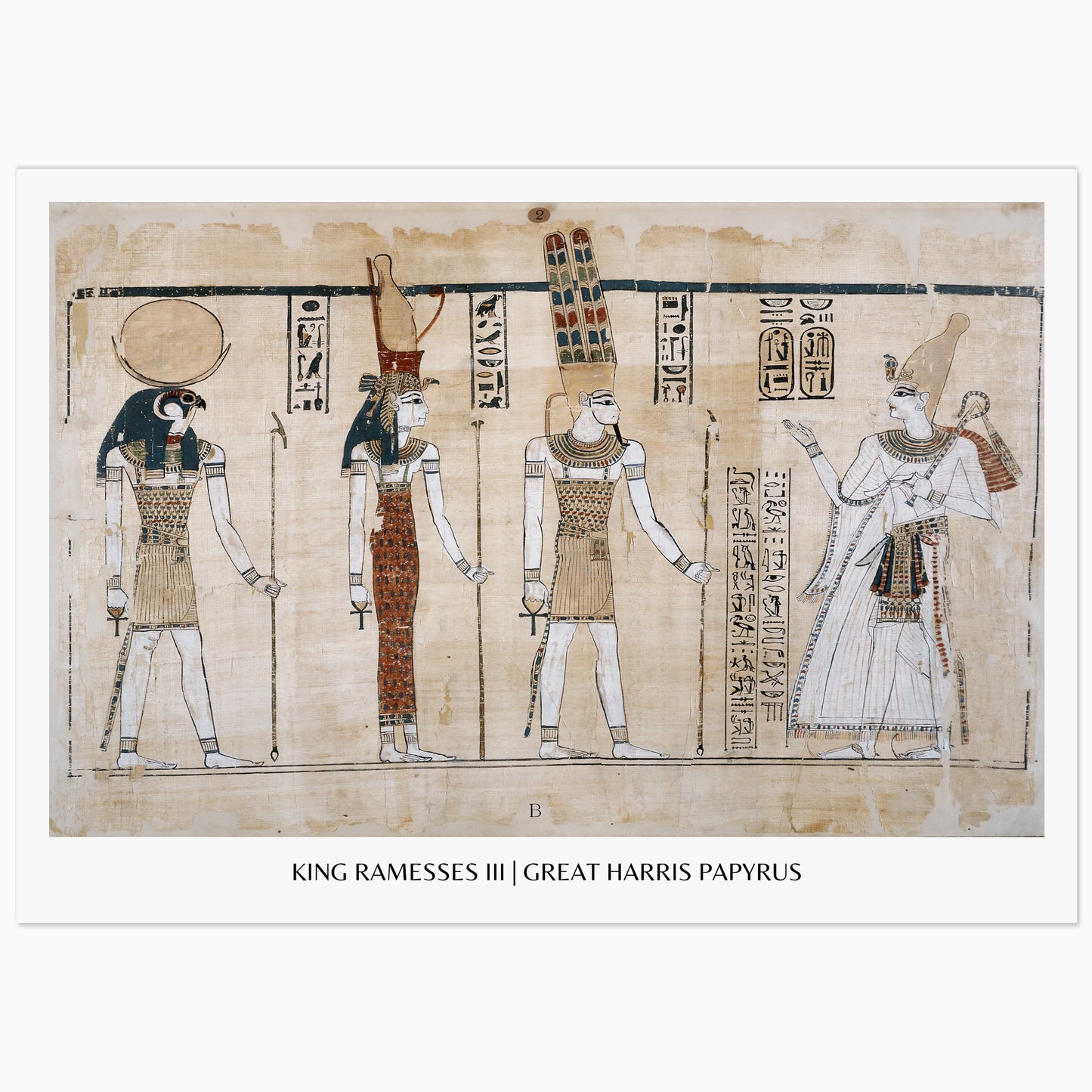Wallango
King Ramesses III | Great Harris Papyrus
King Ramesses III | Great Harris Papyrus
Couldn't load pickup availability
High-resolution reproduction of a page from Great Harris Papyrus
-
✓ Thick, matte, museum-quality paper available in all sizes
✓ Printing from ultra-high-definition images for the finest detail, even on large formats
-
At forty-two metres this is one of the longest papyri still in existence from ancient Egypt. Papyrus documents are made from the papyrus reed, which was common in the Nile valley but relatively expensive. The text is written in hieratic, a handwritten adaptation of hieroglyphs for the medium of ink and brush on papyrus.
The Great Harris papyrus is divided into five sections. The first three sections describe the donations made by King Ramesses III (1184-1153 BC) to the gods and temples of Thebes, Heliopolis and Memphis. The amounts were colossal: the list relating to Thebes alone includes 309,950 sacks of grain and large quantities of metals and semi-precious stones. Each of the three sections alternate with an illustration showing the king making offerings to the main gods from these cult centres. The images are accompanied by hieroglyphic labels. In this frame we see the triad of Thebes: Amun, his wife Mut and their son Khonsu.
The next section of the papyrus deals with a number of minor temples. The final section recounts the historical events of the reign and lists the possessions of all the great temples at the time of the king’s death. The text presents the chaos at the beginning of the Twentieth Dynasty (about 1186-1069 BC) including military battles and other foreign expeditions. This section is clearly idealised, glorifying the king rather than presenting a trustworthy historical narrative. Nonetheless, it does contain many important pointers to the history of the reign. The account ends with the death of Ramesses III and the accession of his son Ramesses IV (1153-1147 BC).
The papyrus is named after A.C. Harris who purchased it in 1855. The provenance is uncertain although the workmen’s village Deir el-Medina, on the Theban west bank (present day Luxor) has been suggested.
Shipping & Returns
Shipping & Returns
SHIPPING OPTIONS: Items are made to order and typically ship within 9-12 business days.
RETURNS: Return requests can be made within 30 days of your item(s) delivery. Please use the contact form so that we can send you the return procedure.
Specifications
Specifications
CUSTOMIZATION :
all our posters can be customized in the margins - just ask us in the chat or by using the contact form. Posters can be printed full page, with a small margin, or with a thicker margin to give a mat effect.
Check our quality commitment here
SIZES : Our posters are printed in inches or in centimeters. These systems are to be preferred according to the country in which you live in order to find more easily the corresponding frames. More information about size options.
SPECIFICATIONS : Premium mat art paper, Weather-resistant. The paper mill, the pulp used to make the paper and the paper itself are all certified by the Forest Stewardship Council®.
- Ships worldwide
- Easy return
- Free shipping






